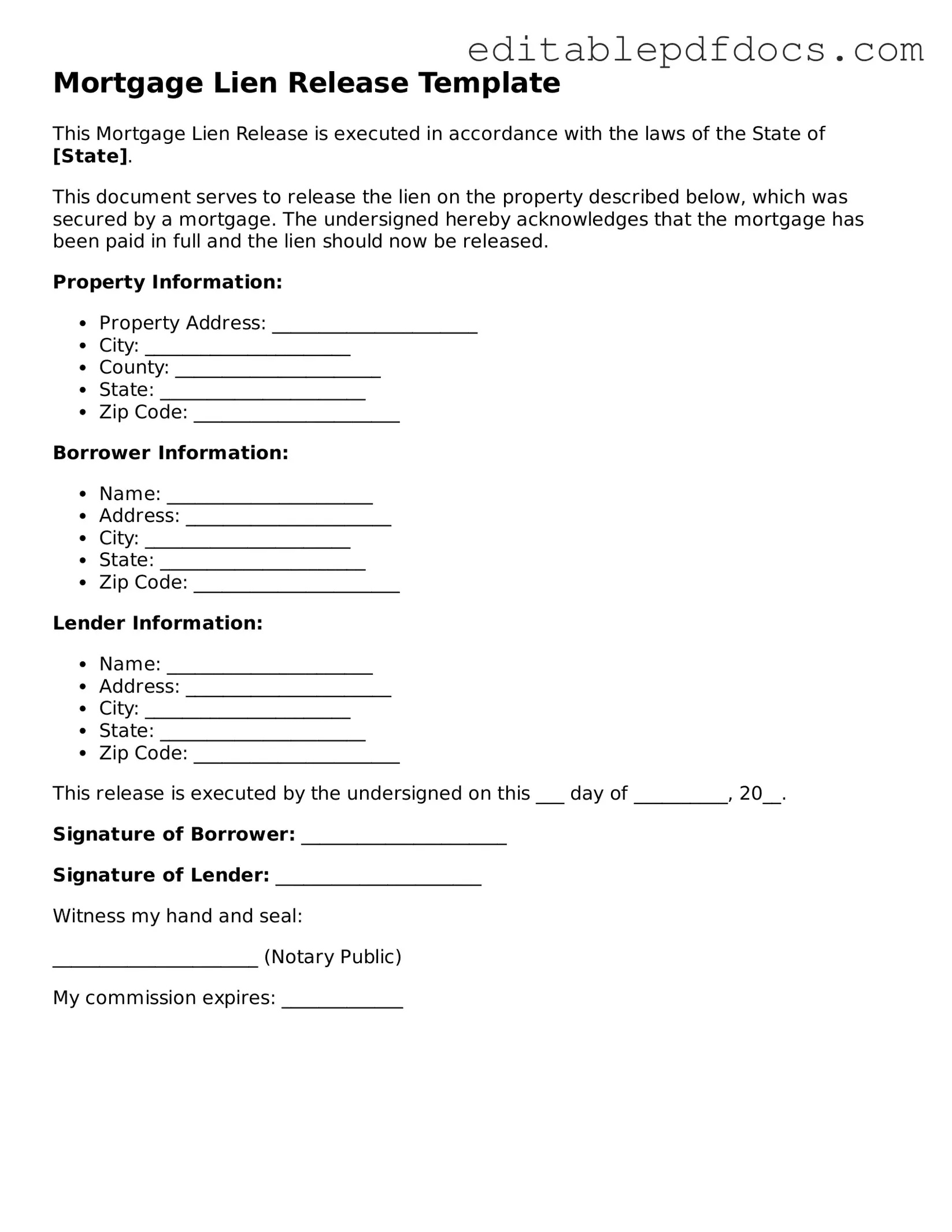Filling out a Mortgage Lien Release form can be a straightforward process, but many people make common mistakes that can lead to delays or complications. One frequent error is not providing accurate property information. The property address should be complete and match what is recorded in public records. Omitting details like the city or ZIP code can create confusion and hinder the processing of the release.
Another common mistake is failing to sign the form. While it may seem obvious, some individuals forget to provide their signature, which is essential for validating the document. Additionally, if the form requires a witness or notarization, neglecting these steps can render the release invalid. Always check the requirements for your specific jurisdiction.
People also often overlook the importance of including the correct loan information. This includes the loan number and the lender's name. Providing incorrect or outdated information can lead to unnecessary back-and-forth communication with the lender, causing delays in the release process.
Some individuals mistakenly believe that they can submit the form electronically without checking if their lender accepts electronic submissions. Always confirm the submission method preferred by your lender. If they require a physical copy, sending an electronic version will only prolong the process.
Another pitfall is not keeping copies of submitted documents. It’s crucial to maintain a record of all paperwork sent to the lender. In case of any disputes or issues, having a copy can be invaluable for reference and proof of submission.
Timing can also be a significant factor. Some people submit the release form too soon after paying off the mortgage, assuming it will be processed immediately. However, lenders may have specific timelines for processing these requests. Patience is often necessary, but it’s also wise to follow up if you haven’t received confirmation within a reasonable time frame.
In addition, many forget to check for any outstanding fees or balances. Even a small unpaid amount can complicate the release process. Ensure that all financial obligations related to the mortgage are fully settled before submitting the form.
Another mistake is neglecting to verify the identity of the signer. If the form is signed by someone other than the borrower, it may not be accepted. This can be particularly relevant in cases of power of attorney or other legal arrangements. Always ensure that the correct individual is signing the document.
Lastly, people sometimes fail to follow up after submitting the Mortgage Lien Release form. Once sent, it’s important to confirm that the lender has received it and is processing it. A simple phone call can save you from potential issues down the line.
